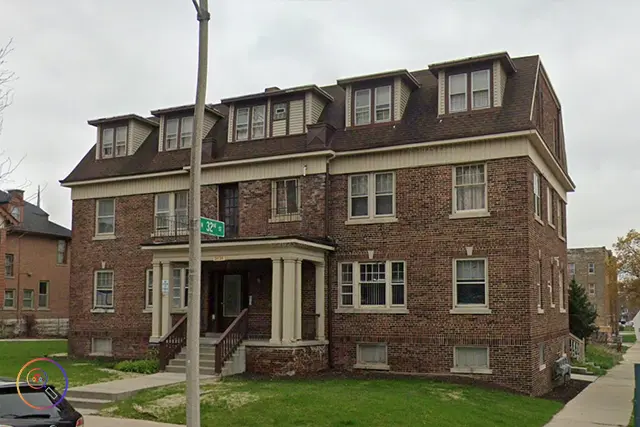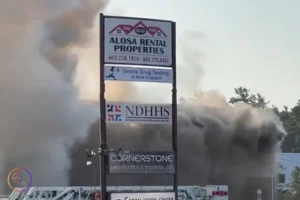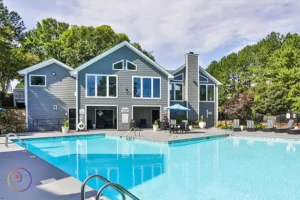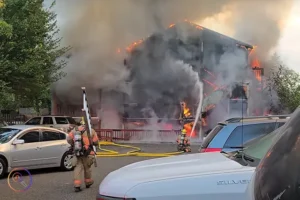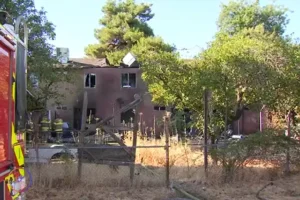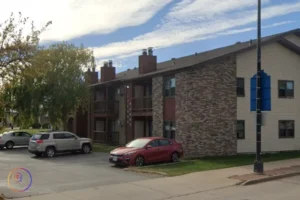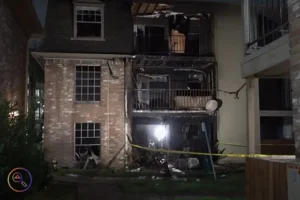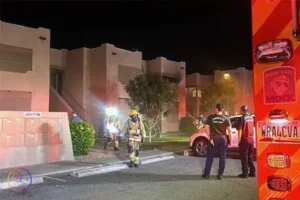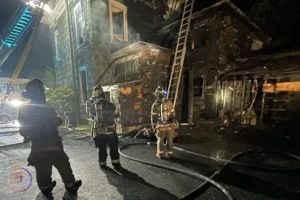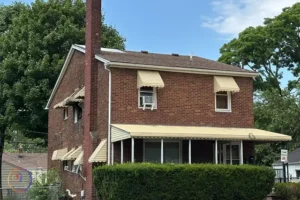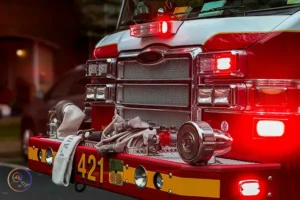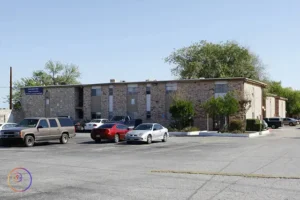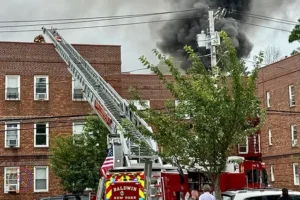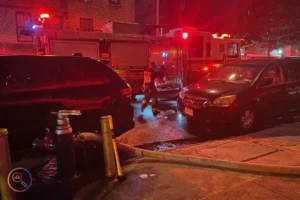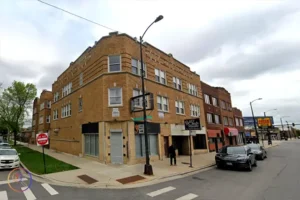The Milwaukee apartment fire that erupted on a quiet Monday morning, July 14, has left a city heartbroken, and searching for answers. A blaze inside a century-old building on Wells Street claimed the life of a 4-year-old girl and left her mother in critical condition, despite rapid response from firefighters. But beyond the tragedy lies a deeper issue: outdated fire codes that still govern many of Milwaukee’s aging apartment buildings.
This wasn’t a case of neglect or delay. First responders arrived within minutes. Alarms sounded. Neighbors rushed to help. Yet one missing piece, a sprinkler system, proved fatal. As officials investigate and residents grieve, a larger question looms: how many more lives must be lost before fire safety catches up to the times?
When Every Second Counts: The Timeline of the Fire
Let’s break down the response time. It’s important.
According to the Milwaukee Fire Department, 911 calls started flooding in at exactly 11:00 a.m. Crews were dispatched at 11:01. They arrived on the scene by 11:03. That’s just two minutes later.
Speed wasn’t the problem. In fact, this was about as fast as any urban fire department could reasonably respond. But the fire had already gained a dangerous hold inside the apartment by the time they arrived.
Firefighters noted that residents were already self-evacuating when they got to the building. But one unit was locked tight, the same one where the fire had ignited. Crews had to force their way in. What they found inside was horrifying.
A woman and her young daughter were both unconscious. Neither had made it out.
They were rushed out of the building and medics began resuscitation efforts immediately. The girl was transported to a nearby hospital, where she later died. Her name was later released by the Milwaukee County Medical Examiner’s Office: Xiomara Jermino.
She was just four years old.
Get A Coverage Now!
Starting from $5/mo.
The Building’s History, and Its Alarming Gaps
Here’s where things take a troubling turn.
The apartment building was constructed in 1921. That’s more than 100 years ago. While it passed safety inspections in recent years, it lacked one life-saving feature that could have changed everything: a sprinkler system.
And the worst part? It wasn’t legally required to have one.
Wisconsin state law mandates sprinklers in buildings constructed after 1974. Anything built before that can be “grandfathered” in under older codes. This building was one of those.
So even though the fire alarm inside the building was working, there was no sprinkler system to contain the flames before they became deadly.
Let that sink in.
In 2025, a child in the city of Milwaukee lost her life in a building without modern fire safety measures, not because of neglect or malfunction, but because the law simply didn’t require it.
A Fire Chief’s Frustration, and a City’s Responsibility
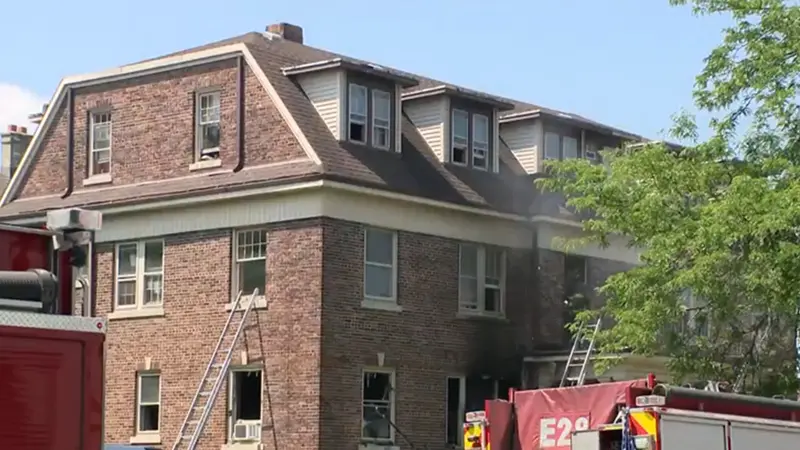
Milwaukee Fire Chief Aaron Lipski didn’t mince words. In the hours following the tragedy, he spoke out, clearly and forcefully.
“This kid didn’t do anything wrong,” he told reporters. “Nobody did.”
He’s right. The tenants didn’t ignore alarms. Firefighters did their job. But the speed of smoke and the absence of a sprinkler system stacked the odds against survivability.
Lipski has been vocal for years about changing state law to mandate retrofitted sprinkler systems in older buildings. He’s faced pushback, like many fire professionals around the country, who are met with the argument that such upgrades are too expensive or difficult to implement.
“We NEED to stop sacrificing SURVIVABILITY for AFFORDABILITY,” he wrote in a recent post on social media, referencing not just this fire but others across the city, including one on Mother’s Day that killed five people in another building without sprinklers.
The message is clear. And personal. And urgent.
Get A Coverage Now!
Starting from $5/mo.
What Happens Now: Residents, Red Cross, and Recovery
The Wells Street fire didn’t just claim a young life. It left a trail of destruction in its wake.
According to officials, seven units were affected by the blaze. Twelve residents were displaced. The Red Cross was quick to step in, offering emergency aid, shelter, and support for the families impacted.
From a structural standpoint, the building is currently considered “uninhabitable.” Smoke damage lingers throughout. The apartment where the fire started sustained “substantial” fire damage.
But this wasn’t just a property loss. This was a moment of reckoning for a city dealing with an aging housing stock and a growing fire safety gap.
The Investigators’ Questions, and Ours
At the time of this writing, both the Milwaukee Fire Department’s Investigation Unit and the Milwaukee Police Department continue to examine the origin of the fire.
One key detail: firefighters said there were audible alarms sounding when they arrived. That’s a positive sign for detection.
But without suppression, without the ability to slow the spread in those crucial early seconds, the fire gained a dangerous head start.
Investigators haven’t released the official cause. But for many in the community, the “why” has become less important than the “how do we stop this from happening again?”
A Larger Pattern: More Fires, More Losses
Sadly, this isn’t an isolated incident.
Earlier this year, just blocks away, another Milwaukee apartment fire killed five people. That building also lacked a sprinkler system. And just hours before the Wells Street fire, a separate blaze erupted in yet another property without modern fire suppression tools.
This is a trend. And it’s deadly.
Get A Coverage Now!
Starting from $5/mo.
Chief Lipski has compared the city’s older buildings to ticking time bombs. Many are more than a century old, constructed from dry wood, laced with outdated electrical wiring, and sealed by aging doors and walls that trap smoke rather than slow it.
“It’s incredible,” Lipski said, expressing frustration over the state’s inability to enforce change at the municipal level. “We need to put politics aside. We need to put profit aside. And we need to have buildings people can stay alive in.”
Those are powerful words. And they echo louder with every siren.
What Can Be Done: Actionable Steps for Safer Homes
Let’s talk solutions. Not just outrage.
Whether you’re a tenant, landlord, policymaker, or concerned neighbor, here’s what can help prevent future tragedies like the Milwaukee apartment fire:
1. Support Local and State-Level Fire Safety Legislation
If you live in an area with older housing stock, find out if your municipality mandates sprinklers in older multi-unit properties. Advocate for updated codes. Lives literally depend on it.
2. Push for Transparent Building Safety Reporting
Many residents have no idea whether their building has sprinklers, how old the wiring is, or whether emergency exits are accessible. That’s unacceptable. City governments should require landlords to publicly disclose safety system status.
3. Retrofit Existing Buildings
Yes, it’s costly. But it’s also non-negotiable if we’re serious about protecting lives. Sprinkler systems save lives, period. States like California have led the way, others should follow.
4. Install Fire Extinguishers, Alarms, and CO2 Detectors
Even if you can’t control building-wide systems, tenants can add layers of protection in their individual units. Keep extinguishers within reach. Test alarms monthly. Know your exit routes.
5. Educate Tenants on Fire Escape Plans
Landlords and management companies should hold annual safety drills or distribute clear, visual escape plans to all units. When seconds count, preparation makes the difference.
If you rent in an older building, having renters insurance can give you a critical safety net when the unexpected happens.
Get A Coverage Now!
Starting from $5/mo.
A City at a Crossroads
Milwaukee is grieving. Again.
A family is shattered. A child is gone. And a mother fights for her life in a hospital bed.
But this isn’t just a story about loss. It’s a call to act.
Milwaukee, and every city with aging buildings, must now ask the hard questions. Should the cost of retrofitting be a higher priority than the cost of losing another life? Can we continue accepting “code compliance” when the codes themselves are outdated?
Because here’s the truth: the Milwaukee apartment fire wasn’t a freak accident. It was a foreseeable outcome of policies that haven’t kept up with the buildings we still ask people to call home.
Frequently Asked Questions (FAQs)
The official cause of the fire is still under investigation by the Milwaukee Fire Department and Police Department. Authorities have confirmed it is not believed to be suspicious at this time.
Yes, the building had a working smoke alarm system. However, it did not have a sprinkler system, which is not legally required for buildings constructed before 1974.
A 4-year-old girl named Xiomara Jermino died from injuries sustained in the fire. Her mother was also critically injured and remains hospitalized.
The fire department was dispatched at 11:01 a.m. and arrived on scene by 11:03 a.m., just two minutes after the call. Firefighters acted quickly but had to force entry into the locked apartment.
The building was built in 1921, long before Milwaukee required sprinkler systems in multi-unit buildings. Older structures like this are “grandfathered” under outdated safety codes.
The fire impacted seven apartment units and displaced 12 residents. The American Red Cross is currently assisting those affected with temporary shelter and resources.
Fire Chief Aaron Lipski is pushing for state legislation to mandate sprinklers in older apartment buildings. In the meantime, he is sending additional resources to properties known to lack sprinkler systems.
Final Thoughts: Fire Isn’t Fair, but Safety Can Be
There’s no spin here. No silver lining.
A 4-year-old girl died in her own home. Her mother may never fully recover. And it could happen again.
So let’s remember Xiomara Jermino’s name. Let’s remember that time matters. That smoke spreads fast. That sprinklers work. And that inaction, more than fire, is what kills.
If we have the tools to prevent another Milwaukee apartment fire, and we do, then what are we waiting for?

